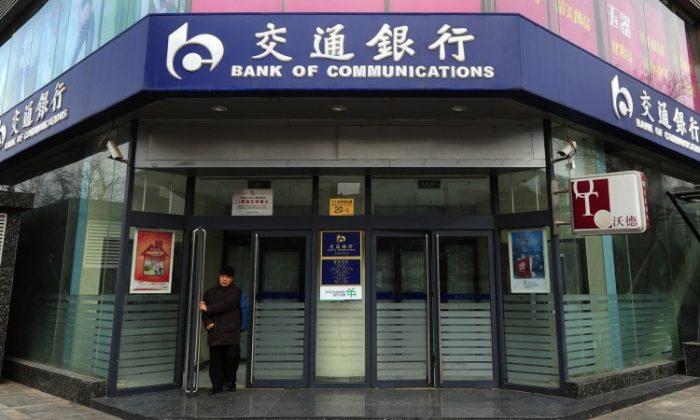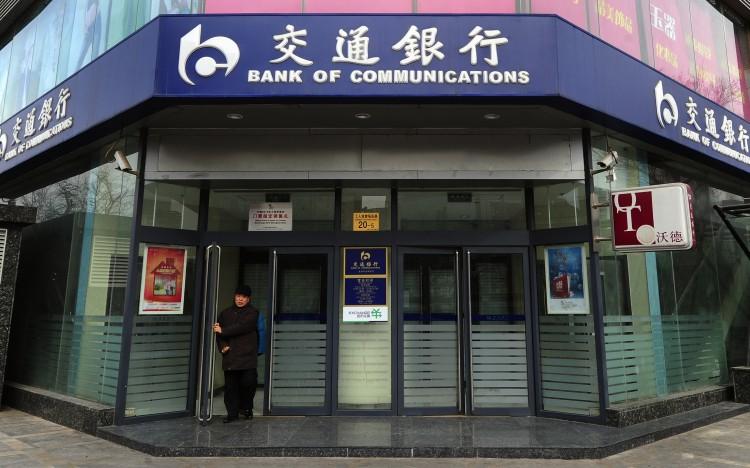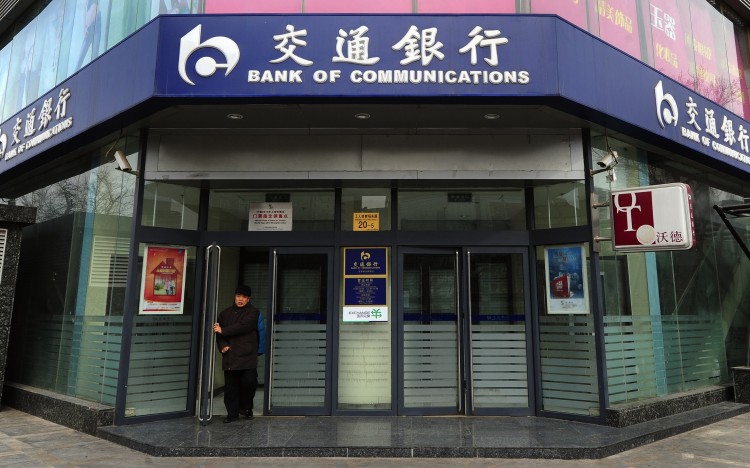The Chinese banking system is without equal when compared to any other country’s banking sector, as it is still under the control of the Chinese communist regime, and true market forces are forbidden from coming into play.
“The Chinese banking sector is truly in a class of its own. ... Despite significant reforms, the state and various public organizations still own controlling shares in the largest commercial banks,” stated Bank of Finland (BOFIT), the central bank of Finland, in a discussion paper published Dec. 13, 2011.
The Chinese banking sector is very similar to those under the former Central and Eastern European communist countries and mirrors the Russian banking sector, where banks were and still are under the control of the state, either directly or indirectly.
In China, over 90 percent of all banking assets are still owned directly or indirectly by the Chinese regime, while in Russia, also an emerging market, the state maintains majority control with a little more than 50 percent ownership.
“Chinese policy has striking parallels to the Russian experience; there has never been a major effort to privatize banking and banks today continue to be directly or indirectly controlled by the state or public institutions,” according to the BOFIT discussion paper.
Chinese banks, even if they are listed on the Chinese or Hong Kong stock exchanges, will not hesitate when called upon by the Chinese regime to increase liquidity. However, such compliance, without questioning the need for or the ability to rebuff the request, could have detrimental effects on the economy over time and keep Chinese banks below par when compared to foreign peers, BOFIT suggests.
“When the authorities decide that the economy needs some extra liquidity, the largest banks—even if they now are partially privately owned and listed on the stock exchange—comply. ... This arrangement may prove a drag on Chinese growth in the longer run,” according to the BOFIT paper.
Another distinct difference from the banking sectors in the global banking environment is that about half of all lending activities by Chinese banks are with Chinese state-owned firms.
“Bank lending is heavily skewed to state-owned companies,” the BOFIT paper states.
Chinese banks also pump lots of funds into local administrations, and the Chinese regime is well aware that any funds paid to state-owned companies or local administrations are rarely used for what they were intended, as the funds might disappear or be embezzled. Most likely these loans will default and not be paid back.
“The unprecedented amounts of stimulus money in the form of massive bank loans went to inefficient state owned business and local governments. Neither have any intention of paying the money back,” according to a recent article on the Seeking Alpha website.
Addressing China’s Banking Monopoly
“A consensus has been reached among Beijing’s top leadership to reduce, if not break, the State sector’s banking monopoly,” the China Daily reported recently, suggesting that Chinese Premier Wen Jiabao made such a remark at the beginning of April during a visit to Fujian Province and the Guangxi Zhuang autonomous region.
As of Dec. 31, 2011, the four largest Chinese banks, Industrial & Commercial Bank of China (ICBC), China Construction Bank (CCB), Agricultural Bank of China (ABC), and Bank of China (BOC), were also among the 20 largest global banks in terms of assets, ranking 8th, 14th, 15th, and 16th respectively, according to the Banks Around the World website. These four banks are responsible for more than 80 percent of all of China’s banking business.
“The four major state-owned banks and a couple of other Chinese private and local banks have long dominated China’s banking sector and have stood to gain a huge profit from the banking business,” according to an article on the CRI (China Radio International) English website. CRI is the overseas broadcasting company for the Chinese regime.
On March 31, the first quarter of 2012, ICBC held total assets of 16.4 trillion yuan (US$2.6 trillion), CCB held total assets of 13.3 trillion yuan (US$2.1 trillion), ABC held 12.6 trillion yuan (US$2.0 trillion), and BOC held 12.9 trillion yuan (US$2.0 trillion).
There are only a fraction of the number of banks in China compared to the United States, where there are over 8,500 banks and about 80,000 bank branches. The five largest banks in the United States are Bank of America, JPMorgan Chase & Co., Wachovia Bank, Wells Fargo & Co., and U.S. Bank.
“China is such a big country, the second largest economy in the world with a population of 1.3 billion, yet it has only a few dozen banks, which coupled with foreign bank branches total one hundred banks at most. In contrast, the U.S. has 300 million people, yet more than 7,000 banks,” according to the Chinese Economic Trends website.
Next...West Buying Into Chinese Propaganda
West Buying Into Chinese Propaganda
“Overall speaking, the Chinese banking sector will maintain an excellent growth momentum and evolve towards a healthier direction. Of course, the banking sector will continue to face challenges due to the unstable global economy,” said Dr. Pengcheng Wang, partner at Deloitte Touche Tohmatsu, in a recent Deloitte press release.
Wang’s remark seems to be out of touch with reality, as the nonperforming loan (NPL) dilemma of Chinese banks has been reported year after year. NPLs are loans that are already in default or close to being in default.
Temasek Holdings (Pte) Ltd., the Singapore sovereign wealth fund, is a state-owned investment fund that invests in precious metals, stock, bonds, property, and other financial instruments. It is in the process of attaining 3.55 billion Hong Kong shares of ICBC from Goldman Sachs and will own a total of 1.3 percent of ICBC shares when the trade is completed.
A number of financial analysts believe that buying Chinese bank stocks is an excellent investment, but continue to neglect discussing the Chinese banks’ nonperforming loan problems.
Questioning Solvency of Chinese Banks
“China’s state-run banks have made what will prove to be a barge-full of bad loans over the past several years, financing a property bubble and a whole host of officially-sponsored boondoggles in order to meet inflated GDP targets. Their reported NPL ratios (approximately 1%) are a joke,” said Patrick Chovanec, professor at Tsinghua University’s School of Economics in Beijing, in his recent article “Don’t Blame the (Chinese) Banks.”
Chovanec excused the Chinese banks’ dilemma because they are controlled by the Chinese regime and have little choice in their lending activities. Chinese banks don’t protest because they are assured of state support in case of a liquidity crisis and don’t have to worry if loans are repaid or not. Besides, earnings depend on how much money these banks lend annually, even if the loans default in the end.
“They know that any losses incurred in this pursuit will be forgiven, one way or the other. They know that, given fixed deposit and minimum lending rates, the more money they lend towards this end, the greater profits they can record, regardless of the eventual outcome,” Chovanec said.
According to Mish’s Global Economic Trend Analysis, defaulted loans have cost trillions of yuan in China. Additionally, should property values fall by about 10 percent, nonperforming loans would double or triple.
Financial analysts, including PricewaterhouseCoopers, have warned that nonperforming loans are most likely going to rise significantly because of the increase in lending over the past two years. Loans were extended for the purchase of vehicles, infrastructure projects, and industrial reform in the steel and new energy sectors.
“There are literally trillions and trillions of renminbi of, frankly, defaulting loans already in China that no one is doing anything about. At some point there’s going to be a reckoning for that,” said Neil McDonald, a Hogan Lovells LLP bankruptcy lawyer based in Hong Kong, in Mish’s article.






